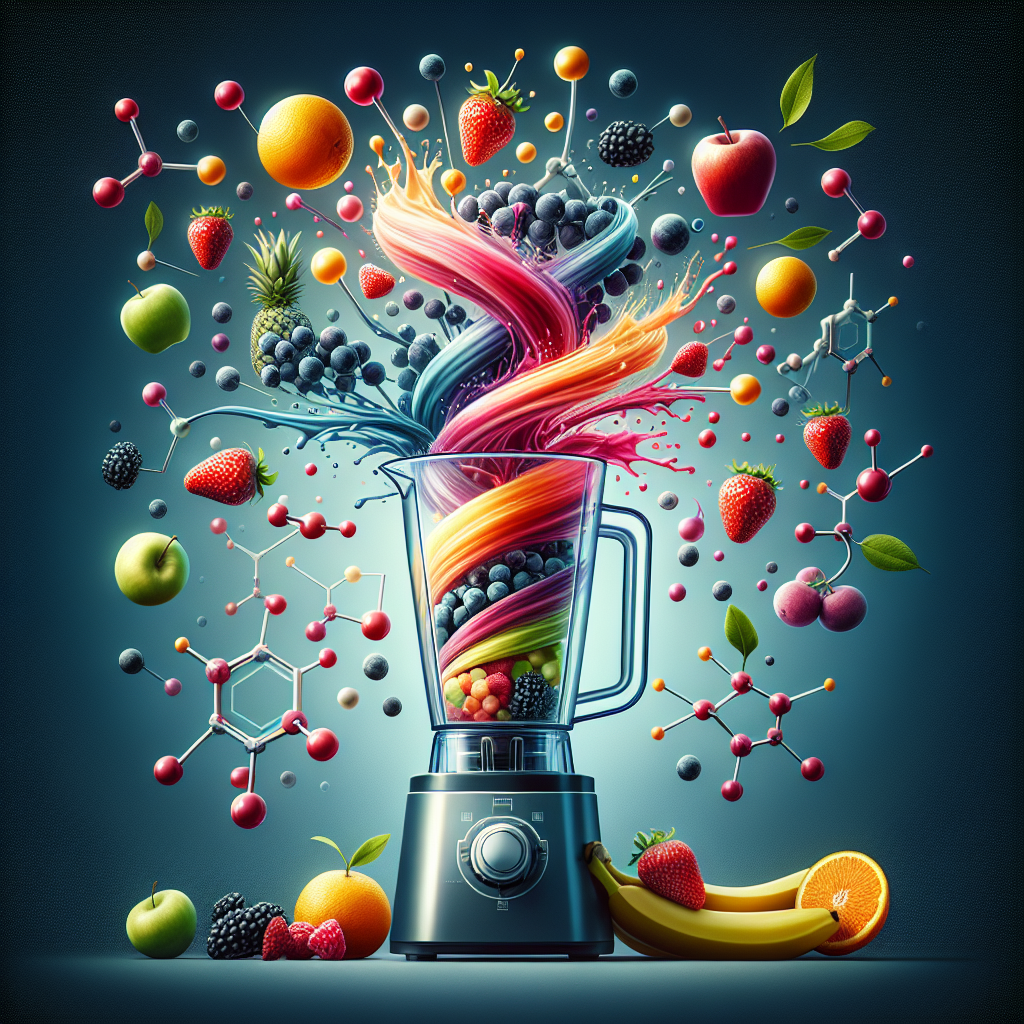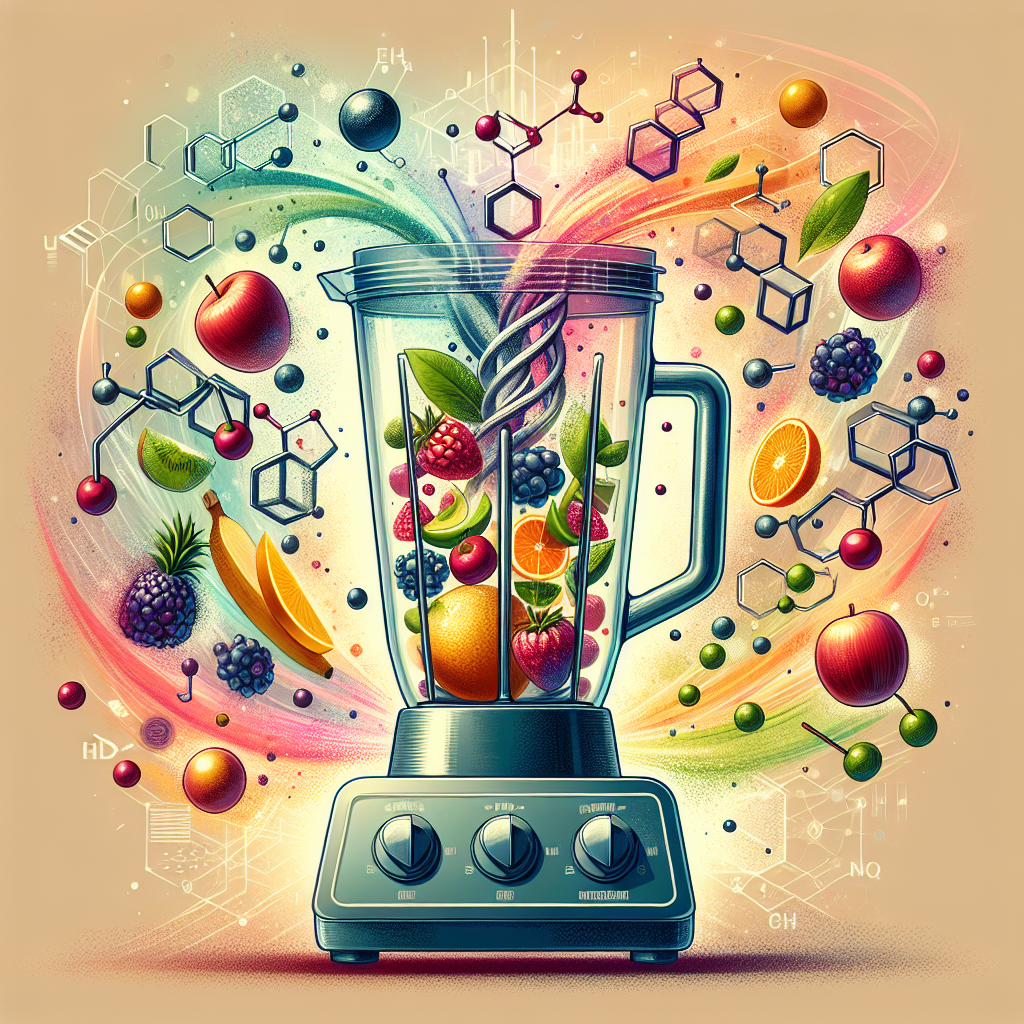Imagine if you could enjoy a delicious and refreshing fruit smoothie while still getting all the essential nutrients. Well, the question arises: does blending fruit destroy nutrients? In this article, we will explore the truth behind this common concern and uncover whether your favorite blended concoctions are still delivering the goods when it comes to nutritional value. Get ready to discover the surprising facts behind the blending process and its impact on the nutrients you need to stay healthy and energized. So, get your blender ready and let’s find out if you can have your smoothie and get your nutrients too!

What is blending?
Definition
Blending, in the context of food and nutrition, refers to the process of using a blender to break down fruits or other food ingredients into a smooth and homogenous mixture. Blenders, commonly known as smoothie makers, are kitchen appliances designed to pulverize fruits and vegetables to create a liquid consistency.
Blenders and blending techniques
Blenders come in various types that offer different blending techniques. High-speed blenders are powerful machines that can easily crush fruits, seeds, and even ice, resulting in a smooth and creamy texture. On the other hand, immersion blenders, also known as hand blenders, are handheld devices that can be directly placed into a container of ingredients, allowing for greater control and convenience.
Nutrients in fruits
Types of nutrients
Fruits are renowned for their rich nutrient content, which includes vitamins, minerals, fiber, and antioxidants. Some common nutrients found in fruits include vitamin C, vitamin A, potassium, folate, and dietary fiber. These nutrients are essential for maintaining good health and supporting various bodily functions.
Benefits of consuming fruits
Consuming fruits provides numerous health benefits. Fruits are low in calories and high in fiber, making them a great choice for weight management and promoting digestive health. They are also rich in antioxidants, which help protect cells from damage caused by harmful free radicals. Additionally, fruits provide essential vitamins and minerals that contribute to overall well-being and can help reduce the risk of chronic diseases.

The impact of blending on nutrients
Oxidation
Blending fruits involves exposing them to oxygen, which can lead to oxidation and nutrient degradation. Oxygen can cause the breakdown of vitamins, especially vitamin C, and other delicate nutrients over time. However, the extent of nutrient loss through oxidation depends on various factors, such as the blending duration and the type of fruits used.
Heat
Blending can generate heat due to the friction between the blades and the ingredients. Excessive heat can potentially lead to the destruction of heat-sensitive nutrients, including certain vitamins and enzymes. To minimize nutrient loss due to heat, it is recommended to blend at lower speeds and avoid prolonged blending sessions.
Exposure to air
When fruits are blended, they undergo rapid exposure to air. This exposure can result in the loss of volatile compounds, such as certain antioxidants and aromatic compounds. However, the impact of this loss on overall nutrient content is often negligible, especially when considering the array of nutrients still present in the blended fruit.
Processing time
The duration of blending can affect nutrient loss. The longer fruits are blended, the more time they have to undergo oxidation and heat exposure. To retain more nutrients, it is advisable to blend for shorter periods and consume the blended fruits promptly.
The role of fiber
Importance of dietary fiber
Dietary fiber is a type of carbohydrate that the body cannot digest. It plays a crucial role in promoting digestive health, regulating blood sugar levels, and maintaining healthy cholesterol levels. Additionally, fiber adds bulk to the diet, promoting feelings of fullness and aiding in weight management.
Effect of blending on fiber content
Blending fruits retains the fiber content present in the whole fruit. However, the texture of the food changes, as the fiber is broken down into smaller particles during the blending process. While blended fruits still provide the valuable dietary fiber, the sensation of fiber in the mouth is reduced compared to eating whole fruits.

Loss of specific nutrients
Vitamin C
Vitamin C is a water-soluble vitamin that is easily lost through oxidation and heat exposure. Blending fruits rich in vitamin C, such as citrus fruits or berries, can lead to some loss of this nutrient. However, even with some nutrient loss, blended fruits often provide a significant amount of vitamin C, making them a convenient way to incorporate this essential nutrient into your diet.
Vitamin A
Vitamin A is a fat-soluble vitamin found in fruits such as mangoes, apricots, and cantaloupes. While blending may cause minimal loss of vitamin A due to exposure to air and heat, the overall impact on the nutrient content is limited. Blended fruits still offer a good source of this important vitamin.
Antioxidants
Antioxidants are compounds that help protect cells from damage caused by free radicals. Some antioxidants, such as polyphenols and flavonoids, may undergo slight degradation during blending. However, given the wide range of antioxidants found in fruits, the overall antioxidant content in blended fruits remains significant and beneficial for health.
Comparing blending with other methods
Juicing
Juicing involves extracting the liquid from fruits and separating it from the fiber. While this method provides a concentrated source of vitamins and minerals, it significantly reduces the dietary fiber content. Blending, on the other hand, retains the fiber content, making it a preferable option for those seeking the benefits of whole fruits.
Eating whole fruits
Eating whole fruits is undoubtedly the most natural and unprocessed way to consume them. By eating fruits in their whole form, you can experience the full range of textures and flavors while benefiting from the intact fiber and nutrients. However, blending offers a convenient alternative for those who prefer a quick and easily digestible option.
Cooking
Cooking fruits, such as boiling or baking, can cause some nutrient loss due to heat and water-soluble vitamins leaching into the cooking liquid. While blending may also lead to minimal nutrient loss, it generally retains a higher proportion of nutrients compared to cooking methods. Blending is a great way to enjoy fruits in their raw and unprocessed state.

Tips to retain nutrients while blending
Blend at low speed
High-speed blending generates more heat, potentially leading to greater nutrient loss. To minimize this, opt for lower blending speeds or use gentle blending techniques to preserve the nutrient content of your blended fruits.
Use minimal water
Adding excessive amounts of water during blending can dilute the nutrient concentration and potentially lead to nutrient loss. Use only as much water as necessary to achieve the desired consistency and flavor.
Add citrus or acidic ingredients
Citrus fruits, like oranges or lemons, are rich in vitamin C and can help compensate for any vitamin C lost during blending. Adding acidic ingredients, such as a splash of lemon juice, can also enhance the flavor profile of your blended fruits without significantly affecting the nutrient content.
Consume immediately
The longer blended fruits sit exposed to air, the more opportunity there is for nutrient degradation. To maximize nutrient intake, it is recommended to consume blended fruits immediately after preparation.
Other considerations
Quality of fruits
The quality of the fruits used in blending can impact the overall nutrient content of the final product. Choose fresh, ripe fruits that are free from blemishes or signs of spoilage to ensure the highest nutritional value.
Storage and ripeness
Fruits that have been stored for extended periods may have slightly reduced nutrient content compared to freshly harvested ones. Additionally, the stage of ripeness can affect nutrient levels. While blending ripe fruits is generally recommended, some individuals may prefer blending slightly unripe fruits for a more tart flavor profile.
Blender type and power
The type and power of the blender used can also influence nutrient retention. High-speed blenders with powerful motors may result in more efficient blending and increased heat generation. Consider using a blender specifically designed for blending fruits to achieve the desired consistency and minimize nutrient loss.

Conclusion
Balancing convenience and nutritional value is a key consideration when it comes to blending fruits. While blending may lead to some nutrient loss, the overall impact is often minimal and should not deter individuals from enjoying the numerous health benefits of blended fruits. By considering factors such as blending techniques, fiber content, nutrient retention, and overall freshness, you can maximize the nutritional value of your blended fruits and enjoy a delicious and nourishing addition to your diet.

